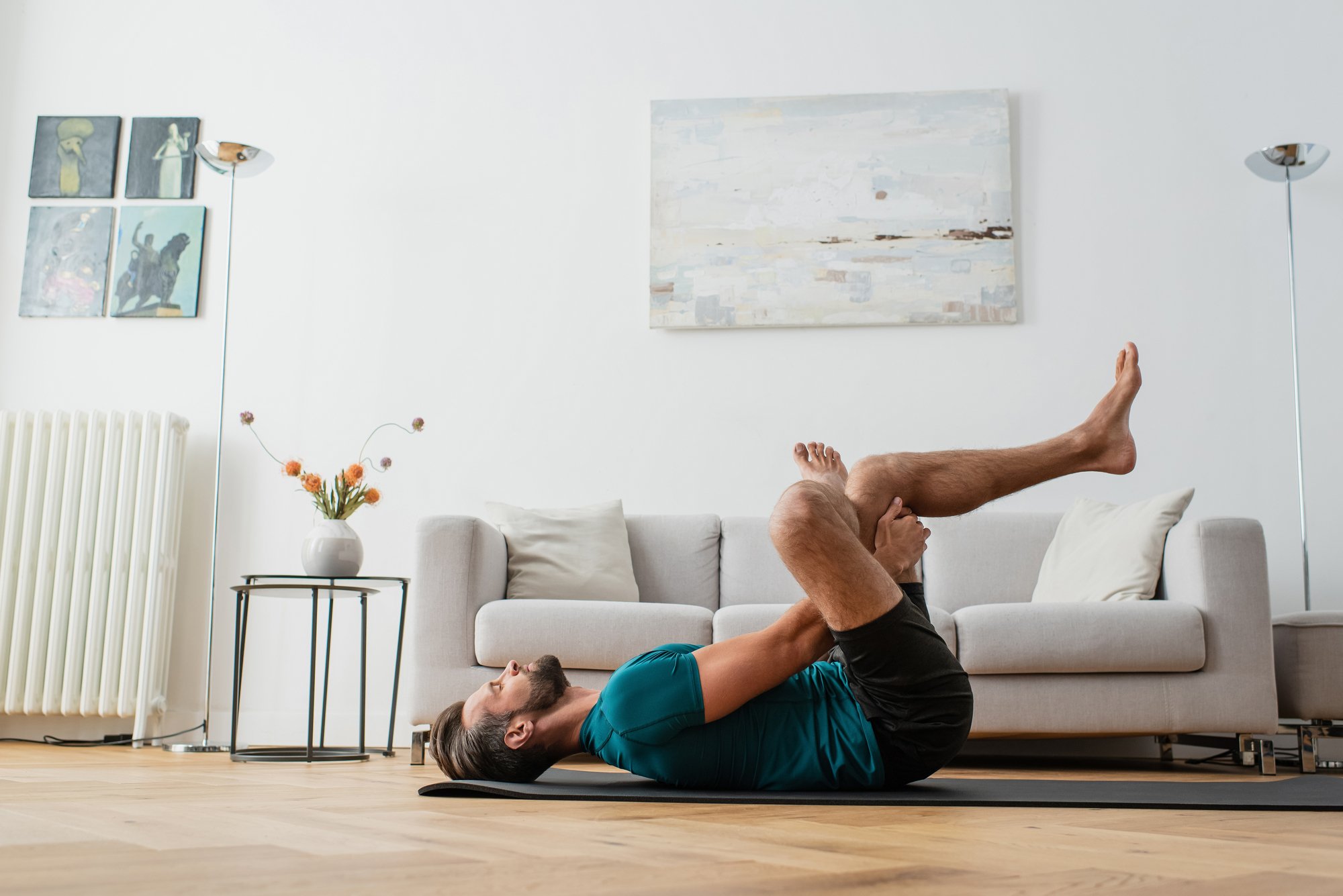Say Goodbye to Sciatica, Hip, and Lower Back Pain
with These 10 Piriformis Stretches
Piriformis syndrome is a neuromuscular condition that often manifests as pain in the lower back, hip, and sciatica region. This issue arises when the piriformis muscle, located deep within the buttocks, compresses the sciatic nerve. Many individuals mistakenly believe they are experiencing sciatica, when in fact, it is the tight or inflamed piriformis muscle causing their discomfort. Distinguishing between the two can be difficult, but incorporating targeted piriformis stretches into your routine can help alleviate these pains regardless of the underlying cause.
In this article, we will delve into 10 effective piriformis stretches designed to address and relieve sciatica, hip, and lower back pain caused by this often overlooked muscle.
1. Supine Piriformis Stretch
This gentle stretch is perfect for beginners and is performed while lying on your back.
- Lie on your back with your knees bent and your feet flat on the floor.
- Cross your affected leg over the opposite knee, forming a figure 4 with your legs.
- Grab the back of your non-affected thigh and gently pull it towards your chest until you feel a stretch in your buttocks.
- Hold for 30 seconds and repeat 3 times on each side.
2. Seated Piriformis Stretch
This stretch is easily done on a chair and can be performed throughout the day.
- Sit on a chair with your feet flat on the ground.
- Cross your affected leg over the opposite knee, forming a figure 4.
- Sit up straight and gently lean forward, keeping your back straight.
- Hold for 30 seconds and repeat 3 times on each side.
3. Standing Piriformis Stretch
This stretch is ideal for those who prefer standing exercises.
- Stand next to a wall or a sturdy surface for support.
- Cross your affected leg over the opposite knee, forming a figure 4.
- Bend your supporting knee slightly and push hips back, as if you were sitting in a chair.
- Hold for 30 seconds and repeat 3 times on each side.
4. Pigeon Pose
This popular yoga stretch is great for targeting the piriformis muscle.
- Begin on all fours in a tabletop position.
- Bring your affected leg forward, placing it on the ground with the ankle near the opposite wrist.
- Extend your non-affected leg straight behind you.
- Lower your hips towards the ground, and hold for 30 seconds.
- Repeat on the other side.
5. Outer Hip Stretch
This stretch targets both the piriformis and the outer hip muscles.
- Lie on your back with your knees bent and your feet flat on the floor.
- Cross your affected leg over the opposite knee.
- Gently pull the non-affected knee towards your chest, while pushing the affected knee away from you.
- Hold for 30 seconds and repeat 3 times on each side.
6. Clamshell Exercise
This exercise strengthens the gluteal muscles and helps alleviate piriformis pain.
- Lie on your side with your legs bent at 90 degrees and your feet together.
- Keeping your feet touching, lift your top knee as high as possible without moving your pelvis.
- Lower your knee back down and repeat for 15-20 repetitions, then switch sides.
7. Hip Flexor Stretch
Tight hip flexors can contribute to piriformis syndrome, so stretching them can help alleviate pain.
- Begin in a lunge position with your affected leg forward.
- Lower your back knee to the ground and place your hands on your hips.
- Gently push your hips forward, feeling a stretch in the front of your hip.
- Hold for 30 seconds and repeat 3 times on each side.
8. Foam Roller Stretch
Using a foam roller can help release tightness in the piriformis muscle and surrounding areas.
- Sit on a foam roller with your knees bent and your feet flat on the floor.
- Place your hands behind you for support.
- Cross your affected leg over the opposite knee, forming a figure 4.
- Shift your weight onto the side of your affected leg, rolling slowly and gently over the piriformis muscle.
- Spend 1-2 minutes on each side, pausing on any particularly tight spots.
9. Dynamic Leg Swing Stretch
This dynamic stretch can help increase blood flow and flexibility in the hip and lower back muscles.
- Stand next to a wall or sturdy surface for support.
- Swing your affected leg forward and backward in a controlled motion.
- Gradually increase the range of motion as you feel more comfortable.
- Perform 15-20 swings on each leg.
10. Cross-Body Piriformis Stretch
This stretch can help alleviate sciatica pain by targeting the piriformis muscle.
- Lie on your back with your legs extended.
- Bend your affected leg and grasp it with the opposite hand, just above the knee.
- Gently pull your affected leg across your body toward the opposite shoulder.
- Hold for 30 seconds and repeat 3 times on each side.
Incorporating these 10 piriformis stretches into your daily routine can significantly help alleviate sciatica, hip, and lower back pain. It’s essential to always listen to your body and never force a stretch beyond your comfort level. If you experience increased pain or discomfort while executing these exercises, it’s important to consult a healthcare professional before continuing to ensure your safety and well-being.
In addition to stretching, incorporating strengthening exercises and focusing on maintaining proper posture throughout daily activities can further contribute to reducing pain and enhancing your overall quality of life. By addressing the root cause of the issue and actively working towards improving muscle flexibility and function, you’ll be better equipped to manage and even prevent future episodes of discomfort.
Other articles you might also be interested in: 20 Ways To Get In Touch With Your Body
Tag: Piriformis Stretches

